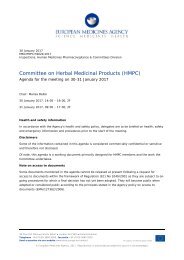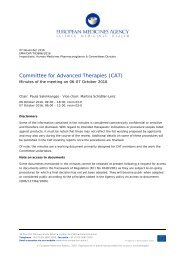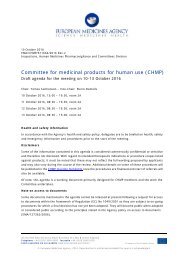Strategic Plan for Food Safety
9789241506281_eng
9789241506281_eng
- No tags were found...
You also want an ePaper? Increase the reach of your titles
YUMPU automatically turns print PDFs into web optimized ePapers that Google loves.
STRATEGIC DIRECTION 2a) Promote cross-sectoral collaboration and in<strong>for</strong>mation sharingto optimize the response to foodborne health risks, includingoutbreaks21Many Member States still lack the necessary surveillance capacity <strong>for</strong> outbreak detection,assessment and response. In addition, foodborne disease outbreaks go undetected, in part dueto lack of communication among the human, veterinary, agriculture and food sectors. WHO,with its partners, has a number of networks and tools in place to address these gaps.The Global <strong>Food</strong>borne InfectionsNetwork (GFN) was established tostrengthen national and regionalintegrated surveillance, investigation,prevention and control of foodborneand other enteric infections.The network promotes integrated,laboratory-based surveillance andfosters intersectoral collaborationand communication among microbiologistsand epidemiologistsin human health, veterinary andfood-related disciplines. Strengtheningthis network through targeted,needs-based capacity buildingef<strong>for</strong>ts is key in further developingfast-reacting and interconnectedresponse systems.Another important aspect of addressinghealth threats is early warningbased on robust assessment toin<strong>for</strong>m action and encourage timelycommunication. In response tothreats such as the avian influenzavirus H5N1 and severe acute respiratory syndrome (SARS), the Global Early Warning System <strong>for</strong>Transboundary Animal Diseases, including Zoonoses (GLEWS), was jointly established by WHO,FAO and OIE. GLEWS builds on existing internal systems of the three participating organizationsto confidentially track and verify events in order to improve harmonization and decrease duplication.It embodies a unique cross-sectoral and multidisciplinary partnership <strong>for</strong> early identificationand assessment of health risks at the human–animal–ecosystem interface.








